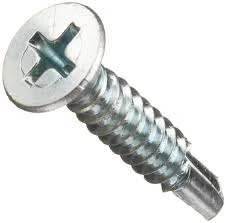Choosing the Right 16mm Chemical Anchor Bolts for Your Construction Needs
Understanding 16mm Chemical Anchor Bolts A Comprehensive Guide
Chemical anchor bolts are an essential part of construction and engineering projects, providing significant structural support and stability. Among the various sizes available, 16mm chemical anchor bolts are particularly popular due to their versatility and effectiveness in various applications. This article aims to explore the features, installation processes, and advantages of using 16mm chemical anchor bolts.
What are Chemical Anchor Bolts?
Chemical anchor bolts are fastening devices that utilize a two-component adhesive resin to secure the bolts in place. This type of anchor is widely used in situations where traditional mechanical expansion anchors may not provide sufficient holding power or reliability. The chemical bonding process leads to improved load capacities and reduces the risk of bolt failure under stress.
Key Features of 16mm Chemical Anchor Bolts
1. Size and Load Capacity The 16mm diameter provides a balance of strength and manageable installation requirements. The load capacity of these bolts can vary based on the substrate material, depth of embedment, and the quality of the adhesive used.
2. Material Composition Typically made from high-quality steel, 16mm chemical anchor bolts may undergo various coatings to enhance corrosion resistance, such as zinc plating or hot-dip galvanizing. This ensures longevity, especially in outdoor or harsh environments.
3. Installation Flexibility One of the significant advantages of chemical anchor bolts is their adaptability. They can be used in solid concrete, brick, and other masonry materials. The chemical adhesive allows for greater flexibility in installation, as it can fill voids and irregularities in the base material.
Installation Process
The installation of 16mm chemical anchor bolts involves several critical steps
1. Hole Drilling Start by drilling a hole of the appropriate size into the substrate. For a 16mm bolt, this often means drilling a 16mm diameter hole to the specified depth.
16mm chemical anchor bolts

2. Cleaning the Hole After drilling, thoroughly clean the hole to remove dust, debris, and any loose particles. A clean surface is crucial for the adhesive to bond effectively.
3. Injecting the Adhesive Using a suitable applicator, inject the resin adhesive into the hole. Follow the manufacturer’s guidelines regarding the mixing and application process for optimal performance.
5. Curing Time Allow the adhesive to cure as specified by the manufacturer before applying any loads to the anchor bolt. This curing time is vital for achieving the maximum strength of the bond.
Advantages of Using 16mm Chemical Anchor Bolts
1. High Load Capacity Chemical anchor bolts typically offer superior load capacities compared to traditional mechanical anchors, making them suitable for heavy-duty applications.
2. Resistance to Vibration The chemical bond reduces the chance of loosening due to vibration, which is particularly advantageous in dynamic environments such as industrial settings.
3. Versatility Their ability to secure fixtures in various base materials expands the potential uses for 16mm chemical anchor bolts, from construction to rehabilitation projects.
4. Enhanced Safety The reliability of the chemical bond contributes to overall project safety, minimizing the risk of anchor failure, which can lead to catastrophic results.
Conclusion
In summary, 16mm chemical anchor bolts serve as a robust and adaptable solution for securing structures in diverse applications. Understanding their unique features, installation processes, and benefits can help engineers and construction professionals make informed choices when it comes to fastening solutions. By leveraging the advantages of chemical anchoring, projects can achieve greater safety, stability, and performance.
-
Weatherproof Plastic Expansion Anchors for OutdoorNewsJun.06,2025
-
Sustainability in the Supply Chain: Eco-Friendly TEK Screws ProductionNewsJun.06,2025
-
Load-Bearing Capacity of External Insulation FixingsNewsJun.06,2025
-
Double Head Bolts: Enhancing Efficiency in Industrial MachineryNewsJun.06,2025
-
Corrosion Resistance in Chipboard Screws: Coatings for Wholesale DurabilityNewsJun.06,2025
-
Butterfly Toggle Bolts : Enhancing Structural ResilienceNewsJun.06,2025
